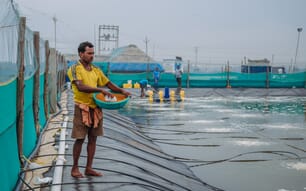Published in the latest issues of The Journal of Fish Diseases, under the title, “Selection response for Streptococcus agalactiae resistance in Nile tilapia Oreochromis niloticus,” the researchers were evaluating the potential of a breeding programme to improve resistance to streptococcosis - one of the most common diseases in global tilapia production - in a commercial population of Nile tilapia in Thailand.

© Spring Genetics
At 60 days post‐hatch, 30 fish from each family used (the base generation - G0) were injected intraperitoneally with a Streptococcosis agalactiae solution and evaluated for 14 days. Disease resistance in this base generation was recorded as the number of days from challenge until death (DD) and as a binary (BIN) trait (dead/alive) on day 14. Fish from the 18 most resistant families were then selected to produce the first generation (G1).
Heritability estimates for G0 were 0.22 using the Cox model, while the researchers noted that selection response indicated that the risk of death decreased to 54 percent, survival time increased to 3.4 days and survival rate increased to 21 percent, suggesting that breeding tilapia that are more resistant to S. agalactiae is possible.



